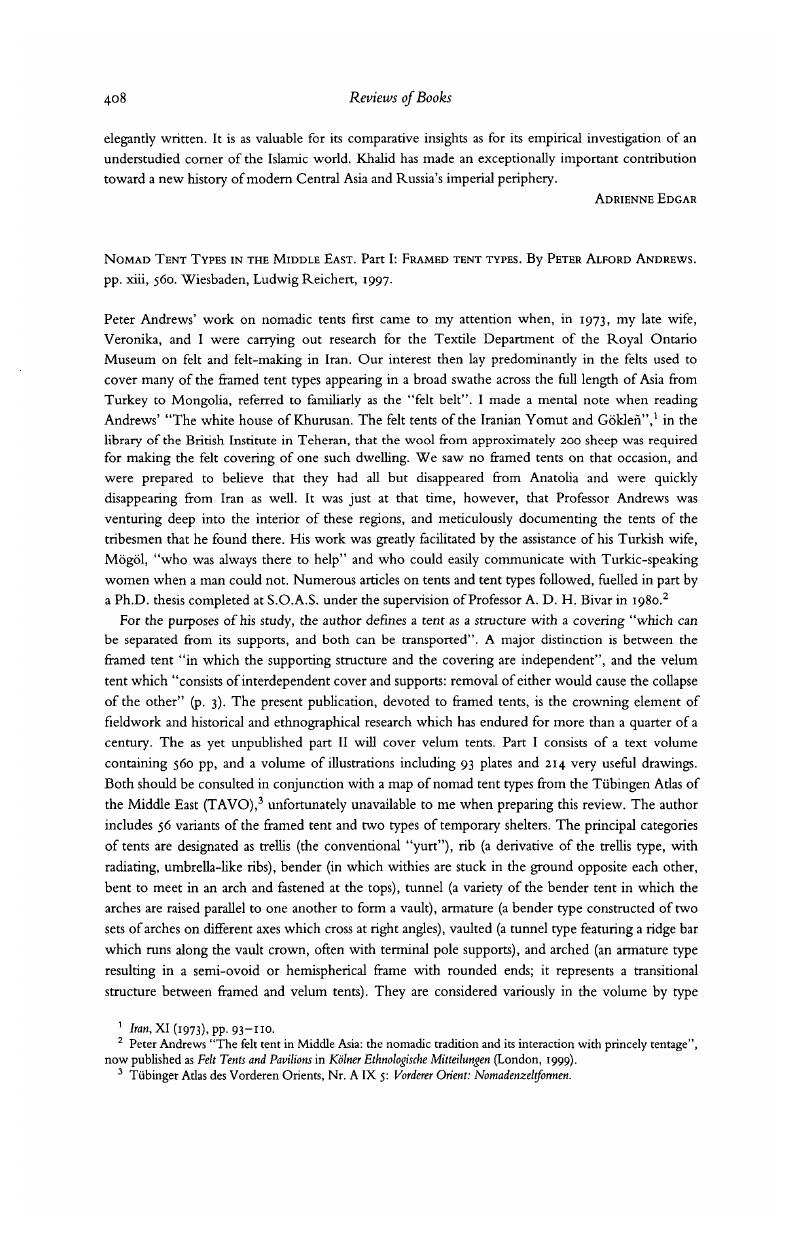No CrossRef data available.
Article contents
Nomad Tent Types in the Middle East. Part I: Framed tent types. By Peter Alford Andrews. pp. xiii, 560. Wiesbaden, Ludwig Reichert, 1997.
Published online by Cambridge University Press: 24 September 2009
Abstract

- Type
- Book Review
- Information
- Copyright
- Copyright © The Royal Asiatic Society 2000
References
1 Iran, XI (1973), pp.93–110Google Scholar.
2 Andrews, Peter “The felt tent in Middle Asia: the nomadic tradition and its interaction with princely tentage”, now published as Felt Tents and Pavilions in Kölner Ethnologische Mitteilungen (London, 1999)Google Scholar.
3 Tübinger Atlas des Vorderen Orients, Nr. A IX 5: Vorderer Orient: Nomadenzeltformen.
4 See above, note 2.
5 “We know, of course, that in the Secret History of the Mongols the cart tent, ger tergen, is represented as the normal dwelling of the Mongols in the time of Činggis Qan, and that even the large tents of his own court were ordo-ger tergen” (“The Shrine Tents of Činggis Qan at Ejen Qoro a”, in Sagaster, K., ed., Antoine Mostaert (1881–1971) C.I.C.M. Missionary and Scholar, vol. 1, Papers, Louvain Chinese Studies IV [Leuven, 1999], p.3)Google Scholar.
6 Gervers, Michael and Schlepp, Wayne A., “Felt and ‘Tent Carts’ in The Secret History of the Mongols”, Journal of the Royal Asiatic Society, 3rd series, 7, pt. 1 (1997), pp.93–116, esp. pp.98–103CrossRefGoogle Scholar.




